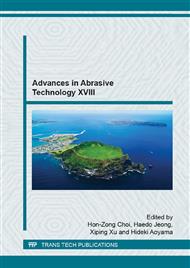p.400
p.406
p.412
p.418
p.423
p.430
p.435
p.440
p.446
Hybrid Process of Laser Heat Treatment and Forming of Thin Plate with a Small Power Semiconductor Laser
Abstract:
In recent years, the recycling of resources has become important because of the aggravation of global environmental concerns. In light of this, it is necessary to minimize the resource needs of current production systems. This concept is called sustainable development. When this concept is applied to machine tools, the assumption is that small parts should be processed using small machines. Additionally, the diversification of consumer needs and the ephemeralization of product life cycles are progressing in industry. As a result, the overall production system has changed from high-mix low-volume production manufacturing, to variant types in variable quantity. In this background, the cell production system is receiving attention as a production system that can achieve variant types in variable quantity. The cell production system also requires miniaturization and process consolidation of machine tools, which has given rise to the need to consolidate heat treatments, especially as part of the process consolidation of machine tools. Laser beams have proved to be effective heat sources when integrated into heat-treatment processes, such as quenching and tempering on machine tool tables. On the other hand, In the case of the thin plate, it is well known that the deformation of a plate occurs due to laser irradiation, as named a laser forming. The laser forming is also effective to generate the complex shape without a press die set. Thus, we propose that the hybrid process of laser heat treatment and forming of thin plate with a small power semiconductor laser, and demonstrate that the proposed method makes it feasible to generate the hardened sheet metal products with a compact machine tools. Moreover, considering the power consumption in laser quenching and forming process, we investigate an appropriate laser irradiation condition from a view of reducing the environmental burden.
Info:
Periodical:
Pages:
423-429
Citation:
Online since:
January 2016
Authors:
Price:
Сopyright:
© 2016 Trans Tech Publications Ltd. All Rights Reserved
Share:
Citation:


